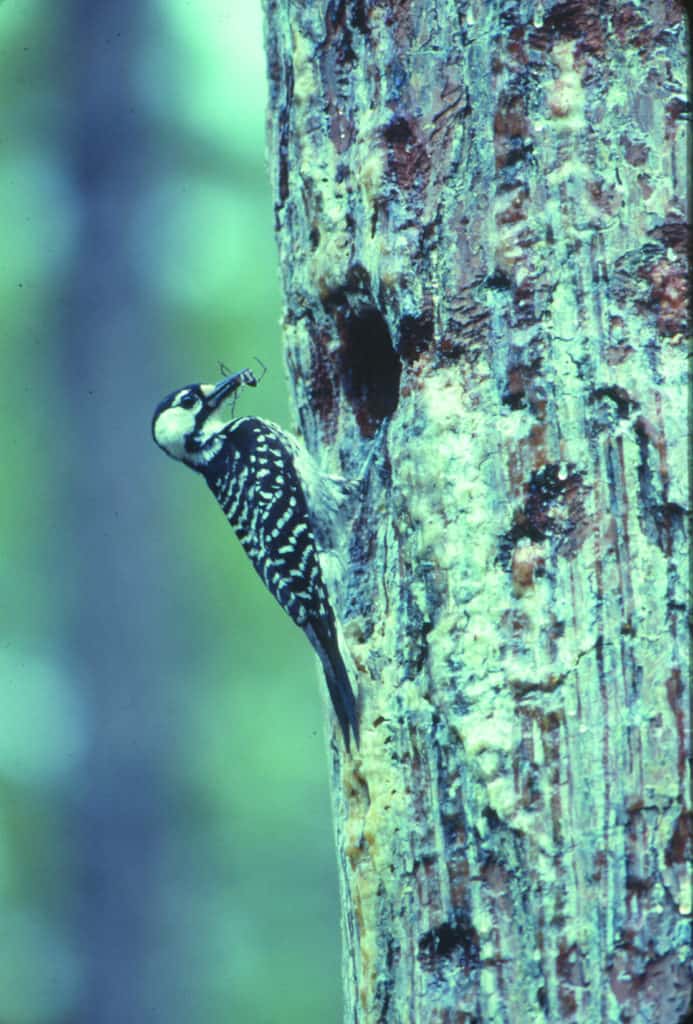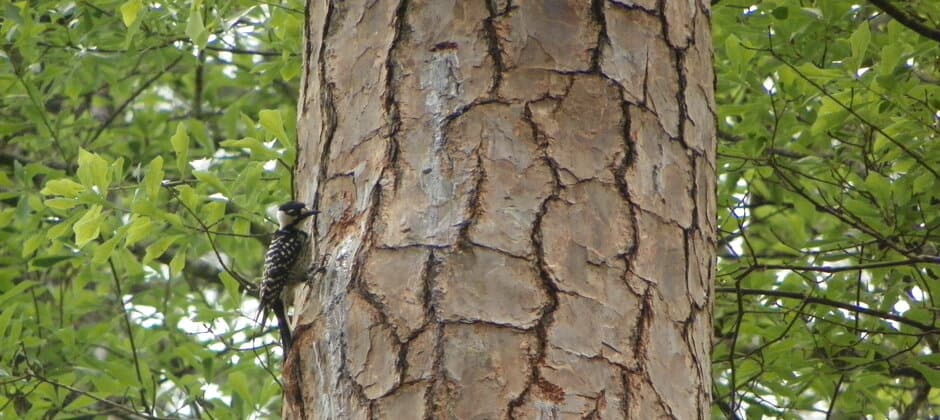Share this article
Relocated woodpeckers know how to make a nest
Juvenile red-cockaded woodpeckers translocated to new areas as part of conservation efforts to help the birds recover are just as good as pecking their way into new nests as those that aren’t moved.
New research shows that the efforts to reintroduce the birds to many areas where they have been extirpated are paying off as the United States Fish and Wildlife Service considers removing or downlisting the birds under the federal Endangered Species Act.
The finding is good news as it vindicates much of the hard work taken by wildlife managers, said Robert Meyer, a research specialist at Tall Timbers Research Station and Land Conservancy and the lead author of the study published recently in Restoration Ecology.
Researchers have been translocating juvenile red-cockaded woodpeckers (Dryobates borealis) to areas where they were extirpated for years. The reintroductions usually focused on removing expendable juveniles, so-called because while some offspring stick around their fledging areas after reaching adulthood to help their parents bore more nest cavities, others will disperse to new areas. But researchers didn’t know whether these young birds would be good at pecking the right wood.

Red-cockaded woodpeckers introduced to new areas as juveniles had good instincts for cavity excavation. Credit Todd Engstrom
Red-cockaded woodpeckers typically nest in pines that have been infected by red heart rot, a type of fungus that gets into the trees and softens up parts of their heartwood, the dense inner part of the tree trunk. Infected trees are easier for the woodpeckers to drill into, but not all trees are suitable for this. Also, trees with close canopies and more mid-story branches aren’t great for the birds, since they can allow access to nest predators like rat snakes. This is part of the reason regular fires are important in providing optimal habitats for woodpecker nests.
But Meyer and his co-author found that the cavities young woodpecker transplants created weren’t that different from those that hadn’t been translocated.
They typically drilled their nest cavities on the south or southwest side of trees where sap flow is typically higher. Sap forms another important defense against rat snakes — it makes it harder for them to climb up into woodpecker nests. It can even kill a snake that gets covered in too much of it, as it can stop them from shedding.
“We think it’s a deterrent,” Meyer said.
The translocated birds seemed to have enough sense to build their nest cavities in these areas, though Meyer said it isn’t clear whether it’s just based on memory of fledging in these kinds of nests, or if it’s due to something more instinctual. Or it might just be trial and error.
“It turned out they were just making the same cavities, south-southwest, just the same as the other birds in this region,” he said.
Meyer said the birds also were pretty consistent from non-moved birds in terms of the height of the nests they created. This is key because nests that are too low may be more likely to burn in fires and may provide better access to snakes, whereas a nest that’s too high will end up smaller due to a narrower trunk. These areas are more liable to get flooded with levels of sap that are too much for young chicks to survive themselves.
The researchers also found that the cavities had positive effects on other species like northern flickers (Colaptes auratus), which also make use of the cavities the woodpeckers excavate in trees.
“Flickers are on the increase ever since we reintroduced the RCW,” Meyer said.
Overall, nest placement is critical because red-cockaded woodpeckers will usually live in one area for there for their entire lives, which on average is eight years. If woodpeckers make the wrong choices and make their nests — they usually bore several in an area over their lifetimes and even pass these down to offspring — then it can ruin their chances for successful reproduction.
Header Image: A red-cockaded woodpecker. Credit: Robert Meyer








